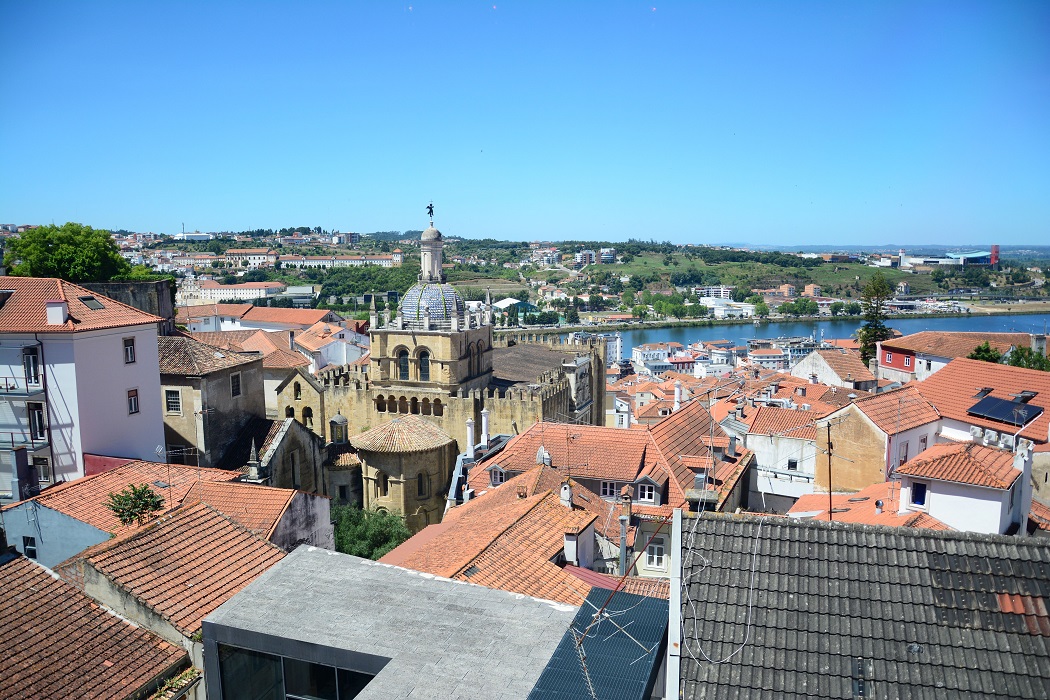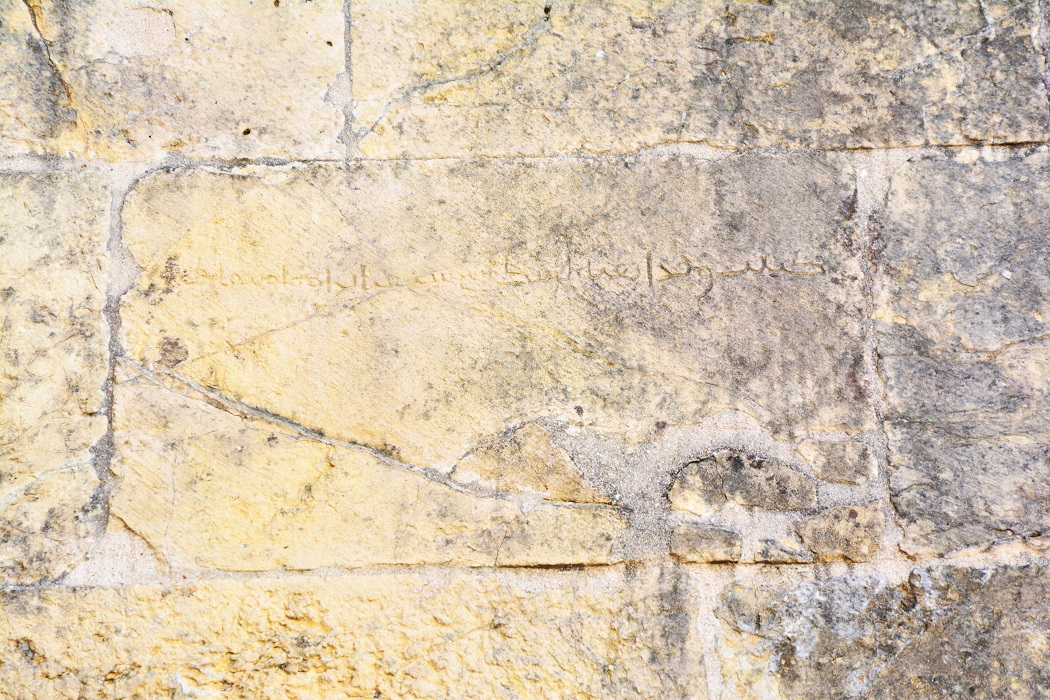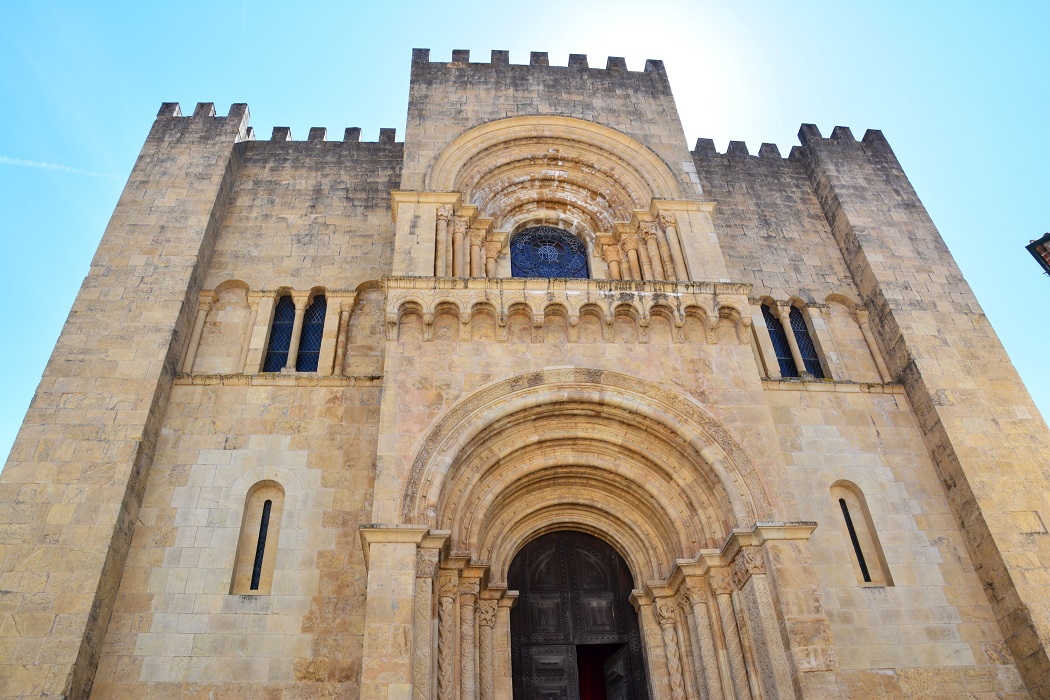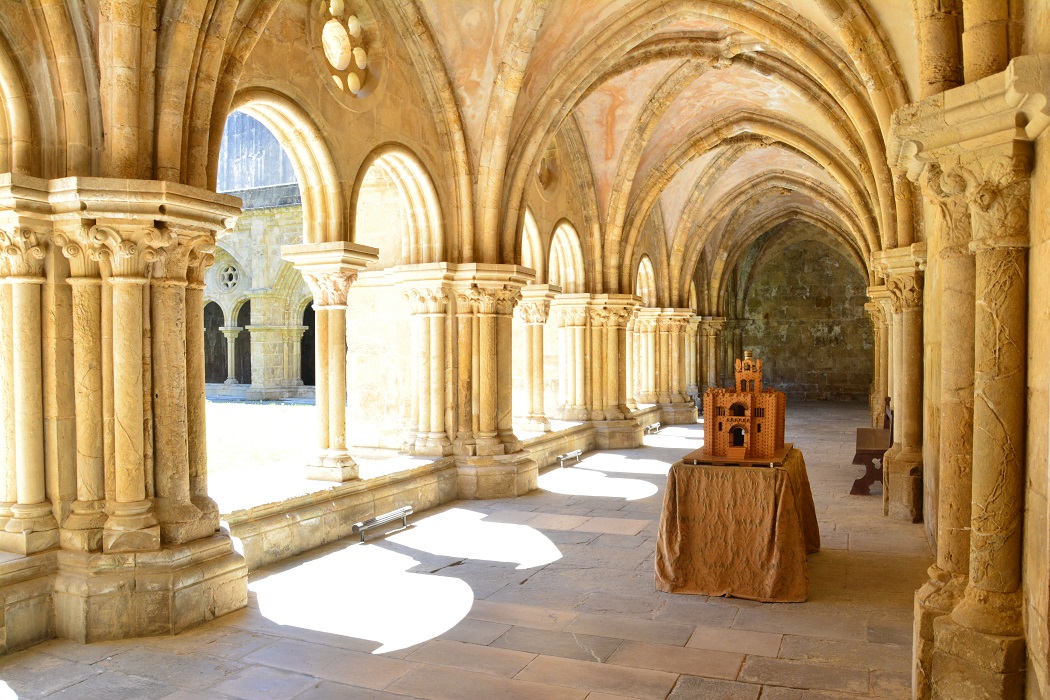"Greatness will remain"

The stones of Coimbra's twelfth-century cathedral glow in the last rays of sunlight on a warm summer evening. Swallows swirl around the austere building as tourists line up to visit the Romanesque monument in Portugal's third largest city.
The cathedral's elaborate three-storey portal in the northern façade attracts many visitors. But right next to it stands something more unique, yet far more discreet – an Arabic inscription on the wall of one of the country's oldest and most important Roman Catholic buildings.
It's less than a meter wide, and it's so high up that it goes unnoticed. Most people who pass by can't read the Arabic letters that were carved into the stone and have faded over the course of eight centuries.
Alois Richard Nykl, a linguist and Arabist who visited the old cathedral in the summer of 1940, translated it as follows "I wrote (this) as a permanent record of my suffering; my hand will perish one day, but greatness will remain,".

Others before him proposed different readings of the inscription, which is believed to have been engraved around the time the cathedral was built, but Nykl's interpretation of the inscription is the most widely quoted of them all.
Financed by Portugal's first king, Afonso Henriques, the cathedral was completed in the late twelfth century, when Portuguese forces were still battling Muslim rulers known as the Moors. Between the eighth and thirteenth centuries, the Moors controlled great swathes of what is now Portugal. The region was known in Arabic as Al-Andalus.
Muslim rule in Coimbra was intermittent until 1064, when the territory was conquered by the troops of the Christian King of Leon. The city was later incorporated into the County of Portugal, and was recognised as the first capital of the Kingdom of Portugal by the Catholic Church in 1179.
Joel Sabino, an historian who works in the cathedral as a caretaker and guide, struggles to explain to visitors how the inscription remained on the walls for over 800 years. Known as Reconquista ("Reconquest"), the campaigns by Christian states to conquer land from Muslims in the Iberian Peninsula played a central role in the construction of national identities in Portugal and Spain.

The construction of Portuguese identity
After the conquest of the last Muslim stronghold in Granada in 1492 by Catholic Monarchs, Jews and Muslims were expelled, turning Spain and Portugal into exclusively Christian kingdoms. Synagogues and mosques were destroyed or turned into churches, and Hebrew and Arabic books were burned in attempts to erase the region's religious and cultural diversity.
Portuguese identity was constructed in opposition to the Moors, who were historically depicted as enemies. Although history books emphasise the battles fought between Christians and Muslims, Sabino says relations were not always so bad. "Different people lived here in Coimbra, and the fact that the Arabic inscription survived for so many centuries on the walls of the church shows this diversity," he says. "It's a message of tolerance, of diversity, it tells us the city was influenced by Arabic and Islamic culture and civilisation. It tells us a story of co-existence." Sabino adds that Islamic and Arabic influences are noticeable in the cathedral's ceramic tiles, the delicately-ornamented columns and the geometric wood ceiling, which are now on display in the nearby Machado de Castro Museum.
Even after Coimbra was conquered from Muslim rulers, an Arabic-speaking Christian community, known as Mozarab (from the Arabic mustaʿrib, "arabicised"), remained influential in the city. For Sabino, the best example of Mozarab presence in the region is probably Coimbra's Count Sisnando Davides, who was educated in Muslim Cordoba and served both the Muslim rulers of Seville and the kings of Leon. His tomb can be visited in the cathedral's Gothic cloister.

"My hand will perish one day" – whose hand?
Although most academics who have studied the inscription agree it is probably as old as the church, very little is known about who carved it.
Nykl speculated that it was carved by a Mozarab mason, an Arabic-speaking Christian who worked in the construction of the cathedral. Others, like Mário Barroca, a specialist in Medieval Epigraphy, believe it's more likely it was the work of a Muslim – perhaps an enslaved stonemason, or a Muslim artist passing through Coimbra.
"The author of this inscription is talking about the completion of something. Perhaps it was done by a stonemason who was working on the church and left it as a living monument to his labour, but we don't really know," says Salam Rassi, an historian with an interest in encounters between Christians and Muslims in the medieval Islamicate World. "What struck me as remarkable was that it's a very literary inscription," he says. "It's a trope you find very commonly in books – the hand will perish but the writing will remain. Life is ephemeral but the written word is enduring."
According to Rassi, the inscription speaks of a very cultivated presence of Arabic. "It suggests there was a deep knowledge of Arabic in the city, and that people used it not just in speech but also as a literary medium," he says.

"Greatness will remain"
The inscription speaks about resilience and an enduring legacy, which for some is filled with nostalgia for Al-Andalus, a period often idealised as an era of cross-cultural exchange where science, arts and architecture thrived.
For Talal Abuzgia, who is originally from Libya and moved to Coimbra in 2018 to do a masters degree, the Arabic words on the walls of the church express great sadness and longing: "I wrote (this) as a permanent record of my suffering," it reads. "There is a lot of pain in the inscription, but it shows there were, and there still are Muslims living in Portugal, where Al-Andalus used to be," he says.
Today, Muslims make up less than 0.5 per cent of Portugal's population of about 11 million. Not many are aware that a much larger portion of the population was Muslim in the past. When Abuzgia moved to Portugal, he was surprised to find that Arabic has left a lasting legacy on the Portuguese language, and that the country was so influenced by Islamic culture.
"When I visit old buildings, castles, churches, or when I am travelling in the mountains and valleys here, I feel a strange mixture of familiarity, longing and fascination with what I see," he says. "Sometimes I touch the old castle stones, close my eyes and travel with my imagination to that era."
Unlike Spain, where Muslim rule left architectural treasures in centres like Granada and Seville, there are few physical remains in Portugal, which was rather marginal in the region. And although Al-Andalus has been largely forgotten and ignored in Portugal, its legacy can still be found. Modest and subtle, just like the Arabic inscription engraved on the wall of the cathedral, Andalusian heritage is still there, still visible – if only we are willing to look for it.
© Qantara.de 2021